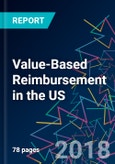Overview
The US healthcare environment has been witnessing a slow albeit continuous shift from volume- to value-based reimbursement over the past couple of decades, with the healthcare reform under the Accountable Care Act providing significant momentum for the change. While the shift has mostly affected provider reimbursement, and affected specific pockets of activity more than others, medicines reimbursement has remained mostly insulated from this dynamic.
Major VBR initiatives utilized so far include bundled payment programs, accountable care organizations (ACOs), and the oncology care model. The ACOs established under the Accountable Care Act have been growing and taking on more risk, but payers highlight integrated delivery networks (IDNs), or similar arrangements where the providers take on the risk for the outcomes as well as total c.of an entire patient population across their healthcare needs, as the most impactful approach.
The US healthcare environment has been witnessing a slow albeit continuous shift from volume- to value-based reimbursement over the past couple of decades, with the healthcare reform under the Accountable Care Act providing significant momentum for the change. While the shift has mostly affected provider reimbursement, and affected specific pockets of activity more than others, medicines reimbursement has remained mostly insulated from this dynamic.
Major VBR initiatives utilized so far include bundled payment programs, accountable care organizations (ACOs), and the oncology care model. The ACOs established under the Accountable Care Act have been growing and taking on more risk, but payers highlight integrated delivery networks (IDNs), or similar arrangements where the providers take on the risk for the outcomes as well as total c.of an entire patient population across their healthcare needs, as the most impactful approach.
Table of Contents
OVERVIEW
INCREASING COSTS DRIVE SHIFT TO VALUE
VALUE-BASED REIMBURSEMENT MODELS
MEETING THE CHALLENGES OF THE SHIFT TO VALUE-BASED CARE
THE PHARMA AND MEDTECH RESPONSE TO VALUE-BASED CARE
OUTCOMES-BASED CONTRACTS
LIST OF FIGURES
LIST OF TABLES








